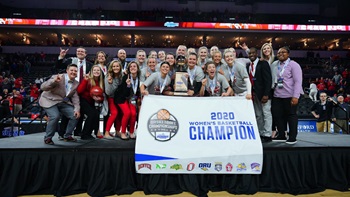Total Headcount Stable Law School Sees Record Growth
USD’s enrollment of first-time, full-time students strongly reflects South Dakota high school graduation numbers, which declined 201 across the state, said Scott Pohlson, vice president of admissions, marketing and university relations.
USD enrolled 9,920 students this fall, down slightly from 10,066 in fall 2018. Total headcount at South Dakota’s six public universities declined 3.4% or 1,217 students over last year. Retention rates hit a historic high for USD, rising from 72% in 2017 to 78% this fall.
Enrollment at the USD School of Law continued to climb this year, capturing a class of 85 students, which is a 16% increase over last year and one of the largest classes in nearly a decade.
“We anticipated a slight decline in our enrollment this fall due to our consistent correlation with South Dakota high school graduates,” Pohlson said. “I’m pleased to see USD above the system average, despite a small decline. We will continue to pivot our strategies, seek new markets and introduce new, industry-relevant offerings like our new biomedical engineering, data analytics and neuroscience programs. South Dakota high school enrollment is projected to increase next year, and we look forward to continuing our strong history of growth in the future.”
South Dakota is the only state in the nation that does not have a needs-based financial aid program, a significant factor in USD’s struggle to enroll PELL-eligible students. As the gap between the cost to attend and available federal aid and/or merit-based aid grows, so does the difficulty of increasing enrollment and providing educational opportunities to those who need and deserve it, said USD President Sheila K. Gestring.
Currently, a South Dakota Opportunity Scholarship-eligible student with the highest financial need would have a gap of approximately $4,400 between cost of attendance and financial aid.
“After exhausting all existing aid options, we still have students who are unable to financially afford college, even when they have academically earned the right to do so,” Gestring said. “It’s our responsibility to find a way to help South Dakota students earn their college degrees and set them on a path for greater success later in life.”
South Dakota has made recent strides toward addressing affordability in higher education, lowering the number of credit hours required for graduation from 128 to 120. Since this change, USD’s four-year graduation rate increased by 22%, Gestring said – an important step in helping students save money and launch their careers earlier.
“As students graduate sooner, it is reasonable to expect a smaller count,” she said. “Graduating earlier is very good for students and affordability.”


